Microfiber: features, types and applications
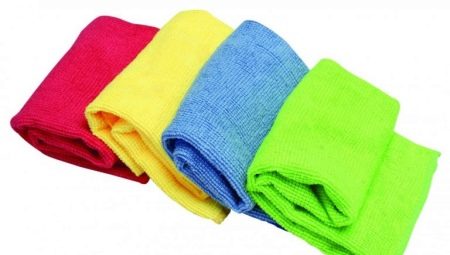
With the development of modern technologies, new types of various materials are constantly appearing. Many inventions greatly simplify human life. One such useful innovation was microfiber, which was developed in the late 70's. XX century, in Japan. Microfiber or microfiber is a synthetic fiber that is made from finely woven threads. One fiber of this material is 100 times smaller than human hair.

What it is?
Microfiber has many unique properties. It is recognized as one of the lightest and densest fabrics that have a long service life. The fabric does not fade during washing, is resistant to various damages and can be used for more than 5 years.

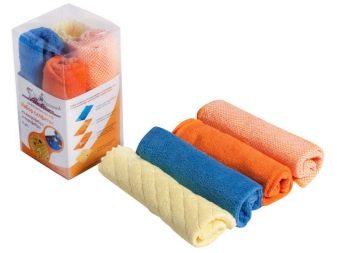
The fabric is highly absorbent. Even when wet, microfiber absorbs all excess liquid from any surface and does not form streaks. The fiber looks very interesting and has practically no lint. Due to this characteristic, microfiber napkins remove all dust from any kind of surface well. For very dirty areas, choose structured wipes. They remove all the dirt that is absorbed between the fibers.

The material is very pleasant to the touch, does not leave any marks or damage even on fragile surfaces such as glass and mirrors. After washing, the material instantly regains its original appearance. Microfiber can be sold in any color and pattern.

100% microfiber can contain nylon fibers with an admixture of polyester and a variety of molecular compounds. The fabric can be mixed or made from natural yarns. If there is a 100 mark on the fabric, it means that it consists of synthetic threads.

The mass production of fiber began in the 80s. XX century. For the manufacture of such a material, very thin fibers are used, the thickness of which is no more than 0.6 microns. The manufacturing process involves the dissolution of synthetic threads under the influence of hot alkali. After such exposure, the threads lose more than half of their weight.
Modern microfiber production involves two methods of fabric production. The first option involves the creation of straight threads, but not very large in diameter. Thin threads cannot be obtained with this production method.
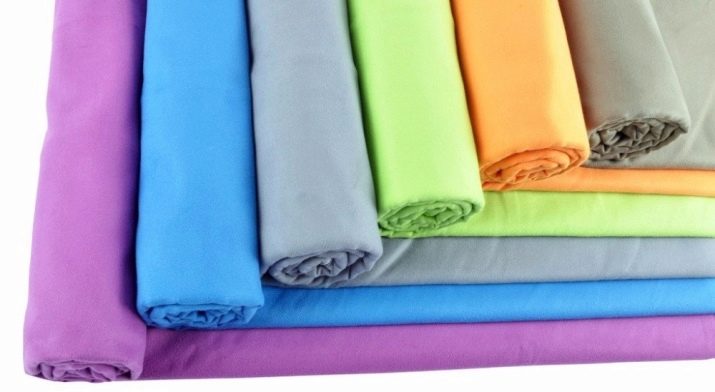
In the process of the second method, 2 substances are passed through the holes, due to which a two-element thread is produced. For this, the method of dissolution and division is used. To create such a fiber, a special shape in the form of an asterisk is used. One substance passes through a rod of this shape and then mixes with another. As a result, the composition undergoes heat treatment, and the finished material in cross-section is very similar to a star. This method is used to make very fine fibers from 2 substances. The composition does not mix with each other. Due to a special technology, the finest microfibers are obtained.

Composition
Real microfiber fiber is made up of the following components:
- natural cotton;
- artificial threads;
- synthetics;
- viscose;
- various polymers in the form of polyester and polyamide.

- does not wrinkle during operation;
- able to absorb 3 times more liquid than its own weight;
- due to the unique structure, water does not get inside the fibers;

- not subject to the formation of pellets;
- due to its strength after intensive use, no fibers or lint remain anywhere;
- Microfiber clothing and accessories keep you warm.


In addition to its undeniable advantages, the fabric has significant disadvantages.
- Microfiber items do not withstand high temperatures well. Clothes made of such material should not be dried near batteries and other heating devices, or ironed.
- The more fat accumulates in the fiber structure, the less moisture the material can absorb.
- Microfiber can cause an allergic reaction.

- Some microfibers, due to their composition, can be prone to pilling.
- It is necessary to dry products made from this material in natural conditions.

Properties
Microfiber has a number of undeniable advantages. Although the material flaws may be quite significant for someone.
The main advantages of the material:
- has a high density;
- dries very quickly;
- in the process of long-term use does not lose color saturation;

Varieties
Microfiber is made from a variety of fibers and processed in different ways. The result is a material that has different quality characteristics.
There are the following types of microfibers.
- Modal. It is based on bamboo cellulose. The fabric comes out very soft, wear-resistant and strong. Very soft to the touch and similar to silk materials. Microfiber has a long service life and retains its quality characteristics for a long time.

- Tactel is a material that is manufactured in the USA. This fabric is renowned for its delicate and delicate texture.
- Meryl is the most expensive type of microfiber. This type of material has antiseptic characteristics due to the fact that it is treated with special ions with silver during the production process. It produces high quality underwear.

Application area
Due to its unique qualities, microfiber is very popular in many areas of human life. The material has great strength and air permeability, and is also hygroscopic. The most popular area of application for this material is the use of small strips for cleaning. Clothes, lingerie and accessories for home and everyday life are very popular. Microfiber has a good service life, which is very important for most products.

Main Uses of Microfiber
The following are distinguished.
- Cleaning cloth. Wipes for cleaning residential and non-residential premises, as well as vehicles, are in wide demand. Accessories for wet cleaning that are attached to mops are very popular. Microfiber is used to make special rags for cleaning all kinds of equipment and gadgets. The fibers are used to make fabrics with increased absorbency for wet cleaning of cars. Such material ideally absorbs various dirt and water, without leaving streaks on the surface. Thanks to the texture of the fabric, even very fragile surfaces are not damaged or injured. The static created during the cleaning process perfectly polishes furniture and attracts dust.

- Microfiber clothing. Due to the high density of the material, it is possible to sew clothes from it, which perfectly protects from adverse environmental conditions. The fabric prevents moisture penetration and creates excellent heat transfer. The material is made from artificial yarns, but it works well for making clothes and linen. Due to the special technology of fabric production, there is practically no possibility of an allergic reaction.

- Microfiber shoes. Modern technologies have helped to create a material that is characterized by great ease and ease of care. Outwardly, such shoes seem to be made of leather. It comes without a top layer and visually resembles nubuck. In the process of wearing such shoes, the legs feel as comfortable as possible and do not get wet. Experts assure that these shoes can be washed and not worry about the safety of their quality.

- Microfiber tights. Due to the use of this material, the item of women's toilet has acquired unprecedented strength and quality. This is the main advantage of this product compared to classic tights. These tights are very pleasant to the touch, soft and velvety. In cooler seasons, they provide much better protection from the cold.

- Microfiber textiles. Almost all textiles can be made from microfiber. This material is used for sewing bedding, clothes, sports uniforms, etc. Microfiber products are very unpretentious in maintenance and practically do not wrinkle. The sleeping accessories are very breathable and it is very comfortable to sleep under them. When making high quality microfiber textile accessories, they will last a long time and will not lose their quality characteristics.
It is important to properly care for the material, taking into account its characteristics.

- Microfiber upholstery. Such a coating will last a very long time and will be unpretentious in terms of care. In order for the upholstery to be in good condition, it must be occasionally wiped with a sponge or a special brush. In case of dirt, any stains are removed with a soapy solution. This material retains its original color and shape for a very long time, it is practically not susceptible to the formation of various abrasions. Faux microfiber suede is very popular. This material looks very presentable and noble. At first glance, even experts find it difficult to answer whether natural or synthetic material was used for upholstery.

Comparison with other materials
In the modern world, there is a huge selection of different materials.They can be of natural or artificial origin.
The main differences between microfiber and other materials.
- Polyester is a material that is made from petroleum products. During the manufacturing process, it is exposed to high temperatures. Then the fibers are forced through special aggregates and twisted into thin threads. Polyester also does not wrinkle and has a long service life. However, the fibers of the material are much thicker. The thread is much coarser to the touch and does not allow water and air to pass through well. The difference in clothes is that polyester clothes will protect you from wind and rain.
But for a sports uniform, it is worth choosing clothes made of microfiber, although they have a much higher cost.
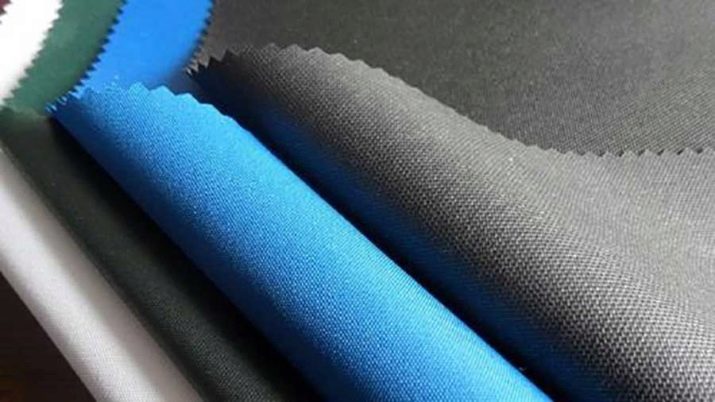
- Fleece is made from polyester and other man-made fibers. In terms of its quality characteristics, it is more like wool. Unlike microfiber, fleece absorbs all dust and is not suitable for tidying up and getting rid of dirt. But both materials are breathable and great for fitness apparel and baby clothes. In terms of care, fleece products should also be washed at low temperatures and not twisted after washing.

- Coarse calico is very popular in the manufacture of bed linen and is a completely natural material. Unlike coarse calico, microfiber creates a cool effect on the body and small puffs may appear on such underwear. Microfiber bedding can build up static electricity.
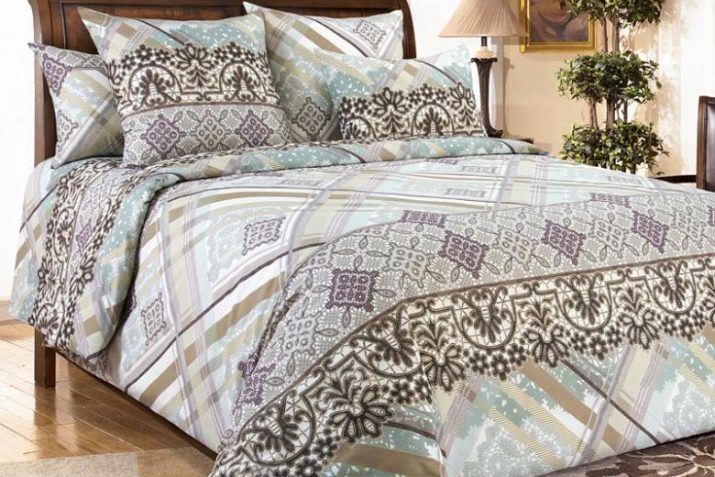
- When caring for a car, suede absorbs much more moisture. But this applies to mirror surfaces and glass. It is better to wipe all kinds of niches and furniture with microfiber. In appearance, some types of microfiber are very similar to natural suede. Unlike microfiber, suede has a more porous and natural texture. Natural suede has a different pile thickness in different areas and smells like leather. Artificial material gives off a synthetic smell. Microfiber has a number of advantages in terms of upholstery. In summer, it cools the skin, and in winter, on the contrary, it warms. Microfiber upholstery is much easier to maintain.

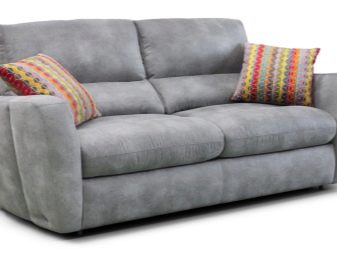
Each type of material has its own undeniable strengths and weaknesses. The consumer chooses for himself what material the product is worth buying from.
Care advice
In order for microfiber products to last as long as possible, they need to be properly cared for.
Basic recommendations for the care of microfiber.
- You can wash in the washing machine, but in the most delicate modes.

- The water temperature should not exceed 40 degrees.
- Do not iron this type of fabric. In case of emergency, it is better to use the minimum temperature conditions of the iron.
- It is not recommended to wring out things by hand; it is better to blot them with a towel.

- Never dry microfiber products on batteries or other sources of strong heat.
- Experts advise against using strong products to get rid of stains and other contaminants.
- Fabric softener may deteriorate. Therefore, its use is highly discouraged.

If you follow all the rules and take good care of microfiber products, then they will last a long time, keeping their original appearance. It is important to take into account that synthetics, although an artificial material, are practically not harmful to human health. This is achieved through the use of modern technologies in the production process of the material.
For a review of a microfiber towel, see the following video.








